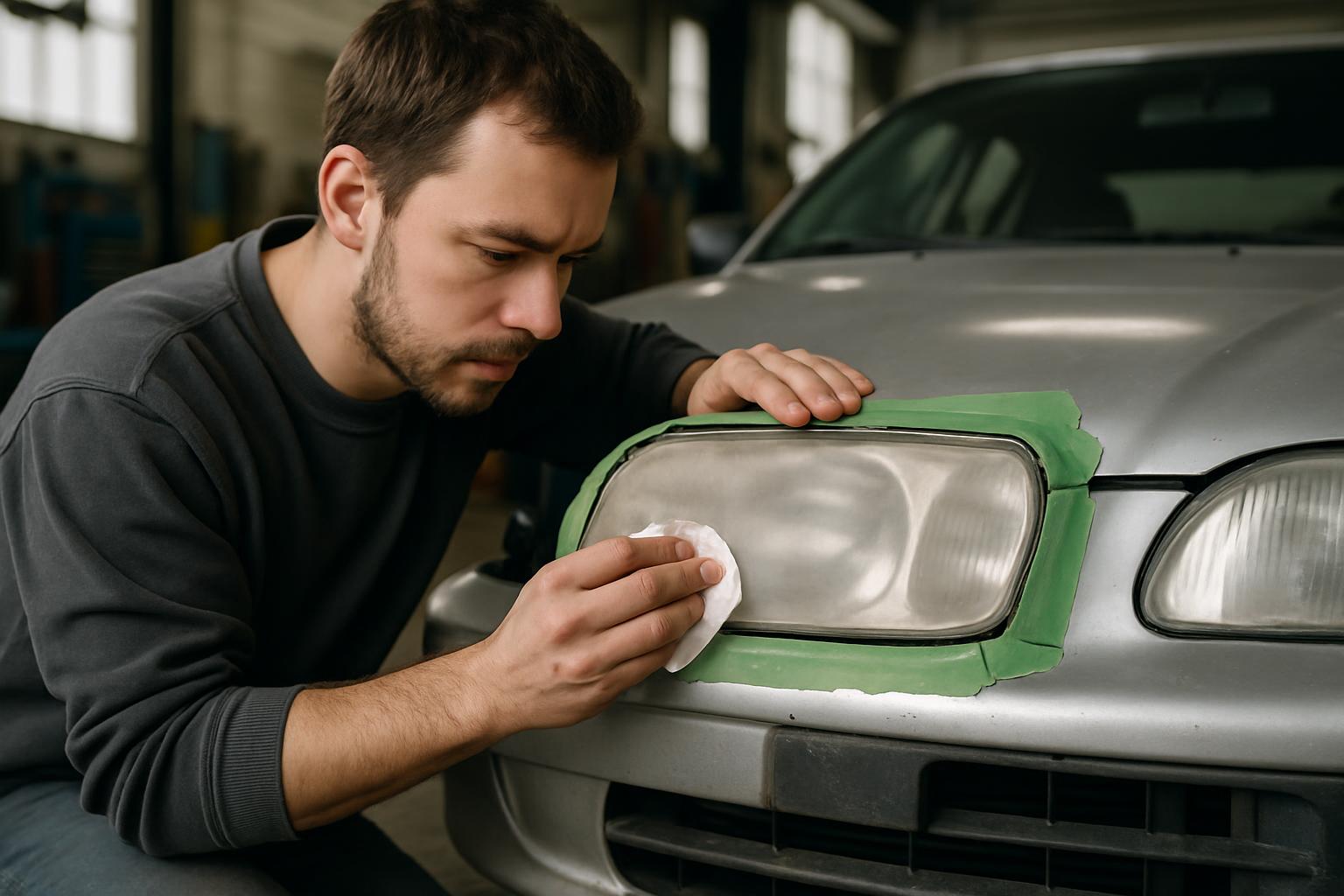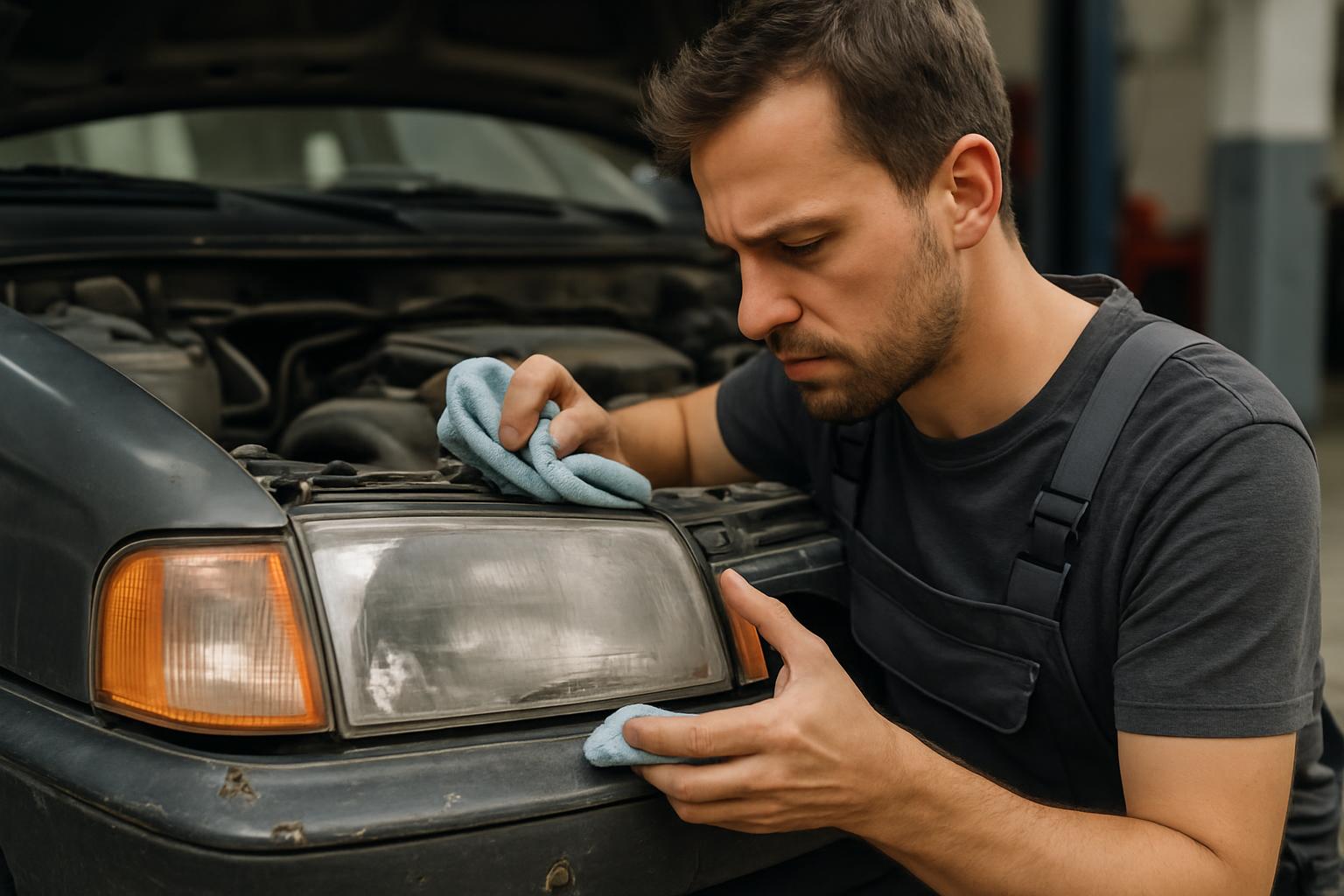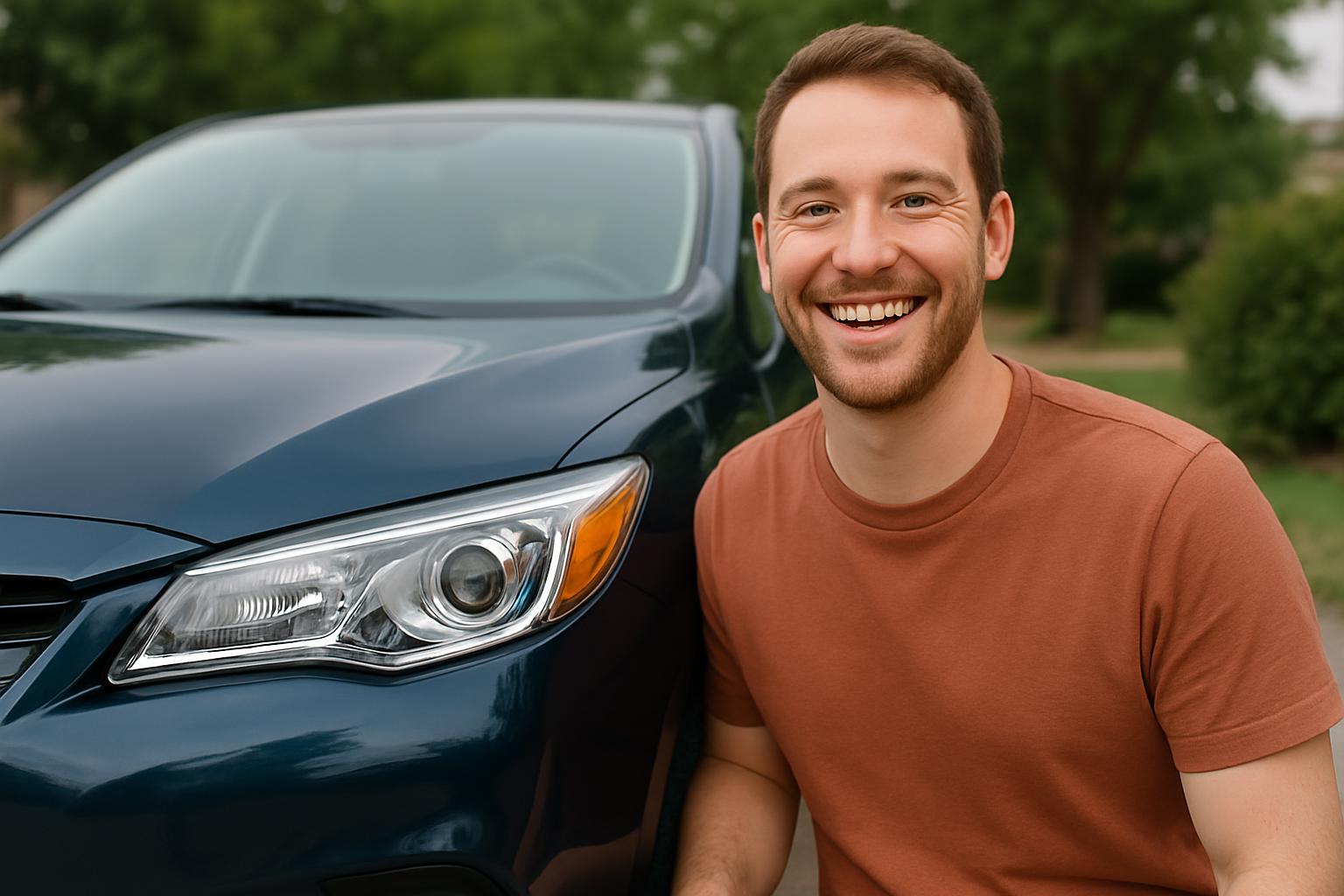Headlight restoration involves cleaning, staged wet-sanding, precision polishing, and applying a fresh UV-resistant clear coat to revive cloudy, yellowed polycarbonate lenses. The following questions cover what owners most need to know—cost, process, longevity, and DIY caveats—so you can decide whether restoration or outright replacement makes the most sense.
Q1. Why Do Headlights Turn Cloudy or Yellow? — A Look at Materials & Environment
1.Sunlight (UV Rays)
Most headlight covers are made of polycarbonate plastic, and prolonged exposure to strong sunlight and its ultraviolet (UV) rays gradually degrades this material, causing the once-clear lenses to turn yellow or appear hazy over time.
2. Chemicals and Dirt
Road salt, tar, bug splatter, car-wash chemicals, and airborne pollution readily cling to the lens, and once tiny scratches from sand or small stones form, they trap this grime even more, leaving the surface looking increasingly dull and hazy over time.
3. Heat and Cooling Cycles
Headlights heat up while they are on and cool down once they’re switched off, and these continual cycles of heating and cooling place stress on the plastic and its clear coating, eventually leading to cracks and a cloudy appearance.
More ideas for headlight choices

Q2. Restore or Replace? — Cost, Benefit, and Risk Compared
1. Cost
Professional headlight restoration usually runs about US$30 – 80 per pair, depending on the shop, coating type and vehicle size, while brand-new assemblies cost roughly US$250 – 1,250 for OEM units and around US$95 – 375 for aftermarket options.
2. Benefit
Restoring your existing headlamps can recover about 70 – 90 % of their original light output, refresh their appearance and provide an environmentally friendly solution, whereas full replacement eliminates structural problems such as cracks, leaks or damaged reflectors and restores factory-new optical performance.
3. Risk
Inadequate restoration can over-sand or even scorch the lens, permanently thinning it and jeopardizing safety—risks that stem mainly from DIY inexperience—while bargain aftermarket lamps often ignore beam-pattern regulations and rely on sub-par plastics, leading to poor light focus and shortened service life. Know More: https://www.paledbulb.com/
Know More: https://www.paledbulb.com/
Q3. Professional Restoration Workflow — Every Step Affects the Result
1. Prep & Masking
Clean the lens with pH-neutral soap, dry it, then tape off all nearby paint and trim to shield them from sanding and polish.
2. Progressive Wet-Sanding
Before sanding, soak each sheet for 10–15 minutes to soften it, then work through the grits—400, 800, 1500, 2000, and finally 3000—while keeping a steady mist or light flow of water so slurry doesn’t build up and overheat. Rotate your sanding direction 90 degrees between grits to make lingering scratches visible, and use only fingertip pressure on a foam or rubber backing pad to avoid gouging or thinning the plastic lens.
3. Precision polishing
Dual-action or rotary polisher; compound, then finishing polish. Watch heat to avoid melting.
4. Oil/wax removal
After polishing, wipe the lens thoroughly with 70 %–90 % isopropyl alcohol or a dedicated panel wipe to remove any remaining oils or wax; a squeaky-clean surface ensures the clear coat bonds with maximum mechanical grip.
5. UV clear coat application
Apply three or four ultra-thin coats of either a 2-part ceramic clear or a UV-cure clear, flashing just long enough for the surface to lose its wet look between passes, then cure the finished film 30–60 minutes under a strong 365-395 nm lamp or direct sunlight until fully hardened.

Q4. How Long Will Results Last, and How Can I Extend Them?
A professional, shop-applied hardened UV clear typically keeps headlights crystal-clear for about 18 – 30 months before any dulling begins, whereas most off-the-shelf DIY kits only hold haze at bay for roughly 6 – 12 months, after which the familiar cloudy film gradually returns.
In short, restoring cloudy headlights isn’t rocket science—just disciplined sanding, polishing, and a quality UV clear coat. Compared with pricey replacements, a well-done restoration delivers safer night vision and a fresher look for a fraction of the cost. Put your money into skilled hands (or meticulous DIY technique) plus a durable clear coat, and you’ll keep the road ahead bright for years instead of months.
Learn More at HYUGA https://www.paledbulb.com/
Learn More about Headlight Restoration:




